I am trying to build an amplifier using op amp 741. But I am failing to build it on breadboard.
I am connecting the positive end of a 9 V battery to pin 7 and negative end to pin 4. As per my knowledge and instructions available all over the internet. Pin 3 is to be connected with the input. The voltage source that I want to amplify has two leads coming out of it positive and negative. If I connect positive lead of my input to pin 3, where should I connect the negative lead??
Similarly, while measuring the amplified output from pin 6 what should be the other point of reference.
I am need of a circuit fix.
I am attaching the pic of the amplifier connections here. Your help will be really appreciated.
Asked
Active
Viewed 992 times
0
-
Ties in with reasons not to use an op-amp with a breadboard. – Oct 06 '18 at 01:45
-
and you've made an error with the bottom-left green wire - the bottom end isn't connected to anything. – brhans Oct 06 '18 at 01:47
1 Answers
2
An op-amp is a building block of a working amplifier. It's not what you want in and of itself.
Here's the short story:
- Use two 9V batteries, for a +9V supply and a -9V supply. You don't have to run "ground" to the op-amp, although you can, depending on the circuit.
- Read this page. I can't recommend it very strongly -- it's in the top five things that popped up when I searched for "differential amplifier". But it should give you some guidance about what to do with your op-amp in the circuit.
- Using a 741 op-amp is like using a Model T Ford. They're interesting antiques, nice to have in a museum, but you wouldn't want to use one every day. There are much better op-amps these days. There were much better op-amps 30 years ago. I doubt that 741's are finding their way into new designs by anyone other than hobbyists.
TimWescott
- 44,867
- 1
- 41
- 104
-
2"You don't have to run "ground" to the op-amp," Ack! You most certainly do. The common battery terminal MUST be connected to signal ground. – WhatRoughBeast Oct 06 '18 at 03:03
-
@WhatRoughBeast I think what is being suggested is that a bipolar +9V/-9V supply is used so that -9V is connected to the op amp instead of ground. Yes, the common terminal must be connected to signal ground, but not to the op amp itself. – Elliot Alderson Oct 06 '18 at 13:21
-
@WhatRoughBeast: [This picture](https://upload.wikimedia.org/wikipedia/commons/thumb/a/a2/Op-Amp_Differential_Amplifier.svg/450px-Op-Amp_Differential_Amplifier.svg.png) in the [Wikipedia article about op-amp applications](https://en.wikipedia.org/wiki/Operational_amplifier_applications). Ground is not connected to any pin of the op-amp. This isn't oddball -- this is **typical**. It is a hugely common error by op-amp beginners to think that ground **must** be run to some pin on the op-amp -- instead, it rarely should. – TimWescott Oct 06 '18 at 14:25
-
@WhatRoughBeast. Eh, no coffee yet, the above was poorly stated. A list: the afore-mentioned difference amplifier circuit; no ground connections. Positive-gain amplifiers; no ground connections. Negative-gain amplifiers using an amp with bias current; + input to ground through a resistor. Single-supply circuits: connections referenced to "virtual ground", not the actual negative rail. You have to **reference** ground somehow, but you often don't **connect directly** to ground, which is what the OP seemed to think. – TimWescott Oct 06 '18 at 14:34